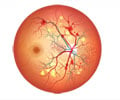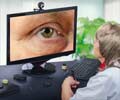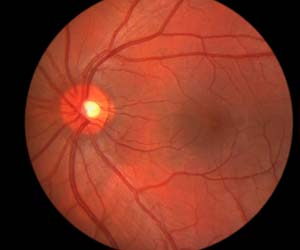New technology offers global hope for early detection and treatment of retinopathy and vision damage.

AI has perfect detection rate for severe cases of condition that causes blindness in preemies
Go to source). The technology has the potential to expand worldwide screening — and ultimately sight-saving treatment — for retinopathy of prematurity, or ROP, the condition that caused musician Stevie Wonder to go blind.
‘Efficacy of artificial intelligence technology in detecting all severe cases of retinopathy of prematurity, a condition that poses a risk to premature infants' vision has been revealed by a new study. This innovation promises to expand global access to early treatment, thus preventing irreversible damage.
#retinopathy #vision #infants
’





ROP causes abnormal blood vessel growth near the retina, which is the light-sensitive tissue at the back of the eye. About 2 million babies annually are born early enough to develop ROP, although in most cases the disease is mild and resolves without treatment. Severe cases cause about 500 babies in the United States, and about 50,000 babies globally, to go blind every year.
More cases go untreated in low- and middle-income countries, where there are fewer ophthalmologists to examine and treat preemies.
“ROP is the leading cause of blindness in children in the U.S. and around the world, and perhaps the most solvable problem among many in global efforts to reduce preventable blindness,” said the study’s corresponding author, J. Peter Campbell, M.D., M.P.H., an associate professor of ophthalmology in the OHSU School of Medicine and the OHSU Casey Eye Institute.
“Although we cannot fully prevent ROP, we can almost always prevent blindness from ROP.”
Advertisement
Preventing Infant Vision Loss
When he was still at OHSU, Michael Chiang, M.D., now director of the National Eye Institute of the National Institutes of Health, and colleagues first developed the i-ROP Deep Learning system, which uses an AI algorithm to identify blood vessel anomalies in retinal images.Currently, specially trained ophthalmologists must manually review these images to diagnose ROP.
Advertisement
This new study marks the first time that autonomous AI screening for ROP has been shown to work in a real-world population — meaning the technology correctly flags the condition on its own, without ophthalmologist support and without preselecting images to improve data quality.
While many AI algorithms work in controlled experiments, they often fail to work in the real world due to differences between training data and real-world use.
For this study, the AI system analyzed nearly 12,000 images of more than 4,000 babies’ retinas.
The photos were taken by nurses at neonatal intensive care units in U.S. and Indian hospitals. Ophthalmologists had previously reviewed the images as part of telemedicine programs in both countries and found that about 1.2% of the babies had severe forms of ROP, while about 5.8% had more-than-mild cases.
The AI system correctly identified all of the severe cases and accurately detected 80% of the cases with more-than-mild ROP.
Did You Know?
Glaucoma, often called the "silent thief of sight," can lead to irreversible vision loss if left untreated.
In 2020, the Food and Drug Administration granted the technology breakthrough status to accelerate its development.
In addition to his role at OHSU, Campbell is also chief executive officer of Siloam Vision, which licensed the technology and is currently leading clinical trials to evaluate the AI system’s safety and effectiveness.
Siloam Vision has also partnered with the nonprofit Orbis International to implement the technology in low- and middle-income countries.
If the technology is ultimately approved by regulatory agencies, ROP would become the second eye disease that can be independently detected by AI.
Diabetic retinopathy — which affects people with diabetes and is the leading cause of blindness in working-age adults — can already be detected with three autonomous AI devices that are approved for use in the U.S.
Reference:
- AI has perfect detection rate for severe cases of condition that causes blindness in preemies - (https://news.ohsu.edu/2024/03/07/ai-has-perfect-detection-rate-for-severe-cases-of-condition-that-causes-blindness-in-preemies)
Source-Eurekalert











